When a Muse is discovered by someone that Muse becomes an inspirational being, one who has the power to help with artistic endeavor and other creative things. Be it music, art, science, building, or any ‘right brain’ activity, the Muse is there to help.
It is said the Muse was a creation of the Greek God Zeus. The ancients say his intention was to bring inspiration into the world. One of Zeus’s first Muses was Aoide; her mission was to inspire the creation of art and music. Even now there are those who become someone’s Muse and inspire them to create. This story is about them.
According to ‘The Illiad’ by Homer around 1250 BC there was a woman who was so beautiful that a thousand ships were launched to get her back, her name was Helen of Sparta. She was taken from her husband, the King of Sparta by a young prince from Troy. However, it seems she wanted to leave her home and go away with Paris the young Prince. This adulterous betrayal was one of the reasons the whole Greek nation with all of its separate city-states united and crossed the Aegean Sea in an armada of 1,000 vessels. Troy’s gold, long coveted by the Greek King Agamemnon (Menelaus King of Sparta’s brother) was another reason for this war that lasted ten years. The woman’s name was changed to Helen of Troy.
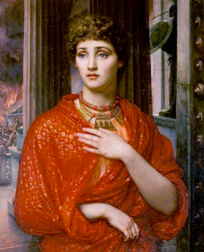
‘Helen Of Troy’ Sir Edward John Poynter 1887
Someone may become his or her own Muse on occasion. In the eighteenth century, Louise Elisabeth Vigee Le Brun (born in Paris on May 16, 1755) did just that. She was a portrait painter, unusual for a woman in those days however she was very good at it. Her paintings of people and an occasional landscape are some of the finest done in the eighteenth and early nineteenth centuries. Louise started painting in her early teens and got so good at it that she gained enough fame to be appointed by the Queen of France (Marie Antoinette) as the royal courts’ portraitist. During her life, she became well known among the European Royals and aristocracy from France to Italy, Austria, Russia, England, Switzerland, and Holland. Here is one of her self-portraits:

‘Self Portrait In Straw Hat’ 1782
Saint Hildegard of Bingen (1098 -1179 AD) was born in The Holy Roman Empire. Her life from age eight until her death was devoted to the Catholic Church, music, writing, and studying medicine. She is best known for her musical compositions. She wrote music in the Gothic liturgical style of the late middle ages.
‘A Feather On The Breath Of God’ is an album of her sacred vocal music released on Hyperion Records in 1985, featuring the English soprano Emma Kirkby. Hildegard’s musical endeavor is so different and beautiful that it has aged well through more than nine centuries. She may be the first identifiable composer of music in history. A lot of music had been written and was identified by ‘Anon’ (anonymous) until she began signing her work.
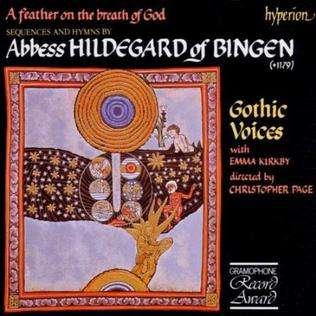
I first heard this music on the public radio station here in Detroit as I was driving home from work in 1988. I went immediately to the local record store and bought a copy of the album. When I got home my wife said I had received two calls from friends of mine both in the music business. I called them back to find out that they too heard this absolutely wonderful music on the radio and went to purchase the album as I did. Excitement about this style of music to me and my Rock and Roll friends was unusual, to say the least. She became a Muse of mine right away, I found out how pleasant it was to come under the spell of her compositions. I got so interested in her that I had to look her up in an encyclopedia and found out she was one of the first Nuns in the church and her music was so well known even after her time that the church began to make Hildegard into a Saint. The process began in the thirteen hundreds with Beatification (an early step to becoming a Saint). However, by the nineteen hundreds, this process was not yet complete. I was surprised that anyone who was that prolific in music and religion would have her Sainthood stalled for many centuries. Various reasons for this delay I found in my research, one of which was that she had written some words in her music about Jesus that some in the Church felt were inappropriate.
My son Ian had been listening to Hildegard’s music for quite a while. I played it for him while he was a baby as well as when he was older. He was enrolled in the lower school at The Academy of the Sacred Heart, where boys could attend only until fourth grade, he asked his music teacher if she was aware of Hildegard of Bingen. She was. Ian asked why Hildegard was not yet a Saint. She asked him to ask that question of Cardinal Maida on the field trip his class was going on to visit The Blessed Sacrament Church in Detroit. Ian did ask the Cardinal that question. Cardinal Maida pulled him aside and talked to him about Hildegard. He told Ian that the same question had been on his mind for a long time and the next time he was in The Vatican he would bring it up. Although it took another eighteen years for Hildegard of Bingen to become a Saint. It happened in May of 2012. Many people over the centuries wished this would happen and it finally came to pass.
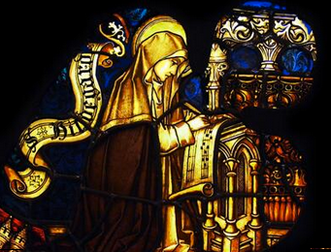
St. Hildegard of Bingen stained glass Einginberg Abby Germany
While I was a photography teacher at The Academy of the Sacred Heart in Bloomfield Hills, Michigan in late January 1999, I was walking down the hall to my morning class when I saw a photograph on a corkboard. I stopped and was immediately intrigued by that image. There were many pics there from the play practice that preceded the semi-annual school play. One of them was of a student I thought I hadn’t seen before; I thought her look was perfect to model for our studio lighting class coming up the next week. One of my students (Yvonne) was walking just behind me and saw me stop and stare at this photograph. She came up to me and I asked her: “who is this”? As I pointed to the image, she said: “that’s Meg”. “Do you know her”? I asked. She told me Meg’s locker was right next to my classroom door and that Meg was there right then. While we were walking toward class I asked Yvonne if she knew Meg very well. She said: “Yes, she’s one of my best friends”. We arrived at the door to my room. I asked Meg if she would be interested in posing as a model for my class the next week. An emphatic “yes” was her response.
Teaching in an ‘all-girls’ high school gave me an opportunity that many other professional photographers don’t get. I found a Muse right there at school. Meg and I have had photo shoots together in my studio and at other locations many times after her first shoot with my students and me. Here is a shot of Meg just before she graduated from high school.

Meg spring 1999
“Girls’ faces formed the path from phony jealousy” (‘My Back Pages’ written in 1964 by Bob Dylan) with this lyric I learned a truth that became so real to me. I was in high school when this truth was revealed in no uncertain way directly to me through my camera; I was going to keep the faces coming onto my proof sheets as often as I could.
A very special woman came my way in 2001. I was in my office at our studio (CID Commercial Image and Design) when Tim, one of our assistants came in and said there was a woman in the front office to see me, I told him to go ahead and bring her in. I was on the phone at the time with Rika an agent at a modeling agency who was telling me she had just sent a woman to see me for a modeling comp photo session. Right then, Amber walked into my office, I almost dropped the phone. An instant positive grabbed me. I was mesmerized by this young woman. Then to me, she said in a deep southern accent “Hi, I’m Amber”.
Another Muse entered my life and I am grateful for it. Amber and I have done many photo sessions over the years.

Amber in my living room 2004
Sometimes a Muse can enter one’s life in a dream-like one of mine did.
Her name is Alia she came from Atlantis. Alia arrived on a gondola-shaped boat heading straight out of a thick cloud out on the water that I was standing next to. Her boat was gliding toward the dock I was on, as she got closer she shouted out to me: “would you please secure the rear of my boat to one of the stanchions there on your dock”? She did the same to the front of the boat.
Alia jumped off of her boat and landed barefoot on the dock. Just as she jumped I extended my hands to help her, as our hands met there was an electric shock between us … it felt just like MGMT’s ‘Electric Feel’ if you know what I mean. She explained this special electricity to me saying we were to be friends because of what happened with that contact between us. I was not so sure but was willing to learn more. Alia already knew my name, when I asked her how she did her answer was: “Oh, I know a lot of things”. She asked how old I was and I answered that I was 73. She told me that she was sure I wanted to know her age as well. I said I was a gentleman and gentlemen don’t ask ladies how old they are. She told me that was all well and good but that I still wanted to know how old she was. I answered that if she was so inclined she should tell me. Alia said she had a birthday coming in two days and that she would be exactly 1,900 years old on that day. I laughed and told her she didn’t look any older than a 100.
When I asked about Atlantis and how she got here she said a space-time continuum provided by the cloud she drove her boat out of. Then without hesitation, she said: “Let’s go to Atlantis.” By this time I am curious but cautious regarding this new person in my sphere of interest. I asked if she could bring me back, and she replied that she had been on this coastline three times in the last month and of course, she could bring me back.
I climbed on the boat with her … then I woke up, happens every time.

In August of 1969 the band (The Bob Seger System) I was working for played at the Oakland Mall in Troy, Michigan. We got there early and set up the gear early. While I was out walking behind the stage I saw many kids just milling around our equipment truck and in the distance. I took my camera with me and shot a few photographs of the goings-on. I was thrilled that so many good-looking women showed up for the show. A few of them would have qualified for Muse status with me, although I did not know that at the time. Nor did I know what a Muse was in 1969. But the photos I took that day over half a century ago turned up something special a little while later.
One of the women in one of the photos showed up at a pre-party for the Michigan Music Awards show in 2015. I was near the door as this woman walked in with one of my books “Travelin’ Man’ (a book of 167 photographs I took while I worked for Bob). I asked if she liked the book and not knowing who I was she asked me if I knew the author. I did.
She then asked if I would autograph it for her. Of course, I would as she showed me a photograph in the book of herself standing near our truck at the Oakland Mall show back in 1969. Surprised, I told her I had been asking people for years who that woman was but no one knew. She said her name was Lynn and she was from Southfield also she was 14 at the time I took her photo. So that’s why none of my friends knew her … she was too young for my friends to pay too much attention to back then although I certainly did!
That story happened a while ago but just recently, I gave a copy of the book to a friend of mine. She took it home and showed her mother. Holy Smokes! Another girl in the same photograph has turned up. My friend told me: “Hey Tom there is a pic of my mom when she was 13 in the book you gave me”! Crystal’s photograph in the book is proof that strange wonderful things can happen if you just pick the right time and place to practice the craft that was wedged into your life by the muse.

Oakland Mall concert backstage: Lynn is the dark-haired girl in the center Crystal is the blonde on the left. August 1969
In my life, there have been many Muses, each one different and delightful in their own way. My favorite and most important ones are my two sons and their mother.
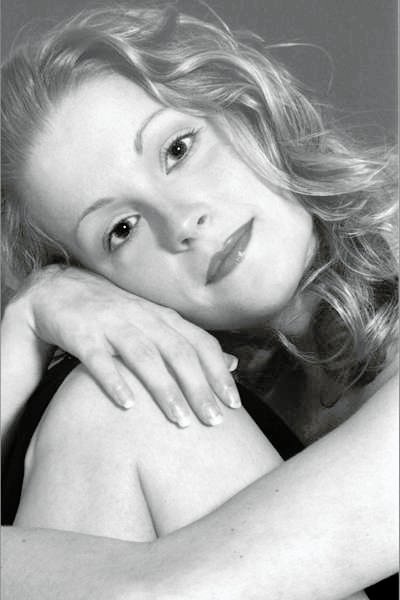
Farewell To The Muse
By Lord Byron
Thou Power! who hast ruled me through Infancy’s days,
Young offspring of Fancy, ’tis time we should part;
Then rise on the gale this the last of my lays,
The coldest effusion which springs from my heart.
This bosom, responsive to rapture no more,
Shall hush thy wild notes, nor implore thee to sing;
The feelings of childhood, which taught thee to soar,
Are wafted far distant on Apathy’s wing.
Though simple the themes of my rude flowing Lyre,
Yet even these themes are departed for ever;
more beam the eyes which my dream could inspire,
My visions are flown, to return, alas, never!
When drain’d is the nectar which gladdens the bowl,
How vain is the effort delight to prolong!
When cold is the beauty which dwelt in my soul,
What magic of Fancy can lengthen my song?
Can the lips sing of Love in the desert alone,
Of kisses and smiles which they now must resign?
Or dwell with delight on the hours that are flown?
Ah, no! for those hours can no longer be mine.
Can they speak of the friends that I lived but to love?
Ah, surely Affection ennobles the strain!
But how can my numbers in sympathy move,
When I scarcely can hope to behold them again?
Can I sing of the deeds which my Fathers have done,
And raise my loud harp to the fame of my Sires?
For glories like theirs, oh, how faint is my tone!
For Heroes’ exploits how unequal my fires!
Untouch’d, then, my Lyre shall reply to the blast–
‘Tis hush’d; and my feeble endeavors are o’er;
And those who have heard it will pardon the past,
When they know that its murmurs shall vibrate no more.
And soon shall its wild erring notes be forgot,
Since early affection and love is o’ercast:
Oh! blest had my Fate been, and happy my lot,
Had the first strain of love been the dearest, the last.
Farewell, my young Muse! since we now can ne’er meet;
If our songs have been languid, they surely are few:
Let us hope that the present at least will be sweet–
The present–which seals our eternal Adieu.
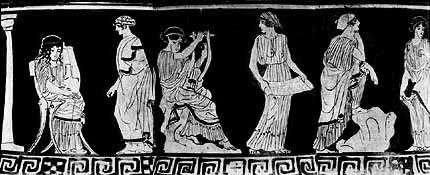
Awake ye muses nine, sing me a strain divine
Emily Dickinson
Awake ye muses nine, sing me a strain divine,
Unwind the solemn twine, and tie my Valentine!
Oh the Earth was made for lovers, for damsel, and hopeless swain,
For sighing, and gentle whispering, and unity made of twain.
All things do go a courting, in earth, or sea, or air,
God hath made nothing single but thee in His world so fair!
The bride, and then the bridegroom, the two, and then the one,
Adam, and Eve, his consort, the moon, and then the sun;
The life doth prove the precept, who obey shall happy be,
Who will not serve the sovereign, be hanged on fatal tree.
The high do seek the lowly, the great do seek the small,
None cannot find who seeketh, on this terrestrial ball;
The bee doth court the flower, the flower his suit receives,
And they make merry wedding, whose guests are hundred leaves;
The wind doth woo the branches, the branches they are won,
And the father fond demandeth the maiden for his son.
The storm doth walk the seashore humming a mournful tune,
The wave with eye so pensive, looketh to see the moon,
Their spirits meet together, they make their solemn vows,
No more he singeth mournful, her sadness she doth lose.
The worm doth woo the mortal, death claims a living bride,
Night unto day is married, morn unto eventide;
Earth is a merry damsel, and heaven a knight so true,
And Earth is quite coquettish, and beseemeth in vain to sue.
Now to the application, to the reading of the roll,
To bringing thee to justice, and marshalling thy soul:
Thou art a human solo, a being cold, and lone,
Wilt have no kind companion, thou reap’st what thou hast sown.
Hast never silent hours, and minutes all too long,
And a deal of sad reflection, and wailing instead of song?
There’s Sarah, and Eliza, and Emeline so fair,
And Harriet, and Susan, and she with curling hair!
Thine eyes are sadly blinded, but yet thou mayest see
Six true, and comely maidens sitting upon the tree;
Approach that tree with caution, then up it boldly climb,
And seize the one thou lovest, nor care for space, or time!
Then bear her to the greenwood, and build for her a bower,
And give her what she asketh, jewel, or bird, or flower –
And bring the fife, and trumpet, and beat upon the drum –
And bid the world Goodmorrow, and go to glory home!

To The Muses
William Blake
Whether on Ida’s shady brow,
Or in the chambers of the East,
The chambers of the sun, that now
From ancient melody have ceas’d;
Whether in Heav’n ye wander fair,
Or the green corners of the earth,
Or the blue regions of the air,
Where the melodious winds have birth;
Whether on crystal rocks ye rove,
Beneath the bosom of the sea
Wand’ring in many a coral grove,
Fair Nine, forsaking Poetry!
How have you left the ancient love
That bards of old enjoy’d in you!
The languid strings do scarcely move!
The sound is forc’d, the notes are few!



